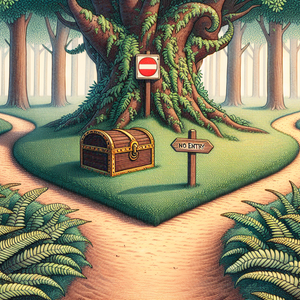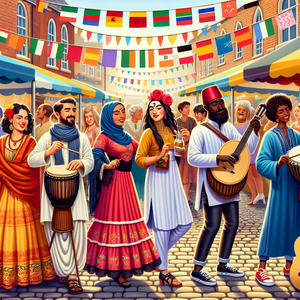The Art of Cartography in Video Games

Video game maps are not merely static images; they are dynamic environments that players explore and interact with. Designers craft these worlds with meticulous attention to detail, ensuring that every element contributes to the overall atmosphere and realism. For example, in "The Legend of Zelda: Breath of the Wild," the vastness of Hyrule is complemented by its diverse landscapes, ranging from lush forests to towering mountains. The map encourages exploration, revealing secrets and challenges as players traverse the terrain. This sense of discovery is essential to player engagement and immersion, as players feel a connection to the world that extends beyond the primary objectives of the game.
Influencing Gameplay Mechanics
Maps in video games often dictate gameplay mechanics, shaping how players interact with the environment. In titles like "Dark Souls," the interconnectedness of locations is a defining feature. The game's map design encourages players to navigate through a labyrinth of areas, unlocking shortcuts and hidden passages that enhance the gameplay experience. This intricate design fosters a sense of accomplishment and encourages players to learn the map, ultimately making them more invested in the game’s world. The gameplay mechanics are deeply intertwined with the map design, creating a holistic experience where exploration and challenge go hand in hand.
Enhancing Narrative and Storytelling
Cartography in video games also serves a crucial narrative purpose. Maps can provide context to the story, revealing important locations and their significance to the plot. In "The Witcher 3: Wild Hunt," the map not only guides players but also reflects the rich lore of the game's universe. Each region is imbued with history, culture, and quests that deepen the player's understanding of the narrative. The choice of locations and the way they are presented can evoke emotions and drive the story forward, making the map an integral part of storytelling. The environments themselves often hold clues and narrative threads that players can unravel as they explore.
Encouraging Player Interaction and Community Engagement
Some games take map design a step further by incorporating elements that encourage player interaction and community engagement. "Minecraft," for example, allows players to create and share their maps, fostering a collaborative environment. Players can explore each other's creations, leading to a vibrant community where mapping becomes a shared experience. This not only enhances player engagement but also demonstrates the creative potential of cartography within gaming. The community-driven aspect of map creation allows players to leave their mark on the game world, creating a sense of ownership and belonging.
Innovative Mapping Techniques
With advancements in technology, video game designers are continually innovating how maps are presented and interacted with. Games like "Assassin's Creed: Odyssey" utilize real-world geography to create an authentic experience. The use of historical landmarks and accurate terrain enhances immersion, while tools like eagle vision or the in-game map interface provide players with various ways to interact with their surroundings. These techniques showcase how the evolution of cartography in gaming parallels advancements in technology and design. The integration of virtual and augmented reality also opens up new avenues for interactive map experiences, further blurring the lines between the virtual and real worlds.
The art of cartography in video games is a powerful tool that shapes player experiences, enhances storytelling, and fosters community engagement. As game designers continue to push the boundaries of map design, we can expect to see even more innovative approaches that enrich our interactions with virtual worlds. From immersive environments that encourage exploration to maps that serve as narrative devices, cartography in gaming is an ever-evolving art form that continues to captivate and inspire players across the globe. Whether navigating through the landscapes of a fantasy realm or unraveling the intricacies of a complex narrative, the maps we encounter in video games invite us to embark on unforgettable journeys—transforming the way we perceive and interact with digital spaces.
Level Designer
Electronic Arts, Ubisoft, Blizzard Entertainment
Core Responsibilities
Collaborate with artists and game designers to create engaging and visually appealing game levels that incorporate intricate mapping elements.
Design level layouts that enhance gameplay mechanics, ensuring a balance between challenge and accessibility for players.
Implement gameplay testing and gather feedback to refine level design and improve player experience.
Required Skills
Proficiency in level design software such as Unity, Unreal Engine, or proprietary game engines.
Strong understanding of gameplay mechanics and player psychology.
Familiarity with 3D modeling and asset creation tools like Blender or Maya is a plus.
Environmental Artist
Rockstar Games, Naughty Dog, Insomniac Games
Core Responsibilities
Create detailed and immersive environments that reflect the game's narrative and enhance the overall visual storytelling.
Develop textures, models, and lighting to establish mood and atmosphere within game maps.
Work closely with level designers to ensure that environmental elements align with gameplay mechanics and player interaction.
Required Skills
Expertise in 3D modeling and texturing tools like ZBrush, Substance Painter, and Photoshop.
Strong artistic vision with an understanding of color theory, composition, and environmental design.
Experience with optimization techniques to maintain performance across various platforms.
Game Designer (Narrative Focus)
Telltale Games, Bioware, CD Projekt Red
Core Responsibilities
Develop compelling narratives and story arcs that are integrated with the game’s map design and player exploration.
Collaborate with level designers to ensure that locations within the game world enhance storytelling through environmental cues and quests.
Create detailed documentation outlining narrative elements related to specific map features or regions.
Required Skills
Exceptional writing and storytelling abilities, with a focus on interactive narrative techniques.
Understanding of game mechanics and how they can be utilized to support narrative delivery.
Experience with narrative design software and tools like Twine or Inklewriter.
Technical Artist
Crytek, Epic Games, Valve Corporation
Core Responsibilities
Bridge the gap between artists and programmers, ensuring that the artistic vision is realized within the game engine without compromising performance.
Develop tools and scripts to aid in the creation of maps and environments, streamlining workflow for other artists and designers.
Optimize assets and workflows for various platforms, ensuring a seamless player experience.
Required Skills
Proficiency in scripting languages like Python or MEL, along with a strong understanding of game engines (Unity/Unreal).
Solid understanding of 3D graphics principles, rendering, and asset optimization techniques.
Excellent communication skills to collaborate with cross-functional teams.
User Experience (UX) Designer for Games
Riot Games, Square Enix, Bungie
Core Responsibilities
Conduct user research and testing to understand player interactions with maps and environments, ensuring intuitive navigation and engagement.
Design user interfaces that enhance map usability and provide clear context for players as they explore game worlds.
Collaborate with game designers and artists to refine map features based on player feedback and usability studies.
Required Skills
Strong knowledge of UX design principles, including wireframing and prototyping tools like Sketch, Figma, or Adobe XD.
Experience conducting usability testing and interpreting data to inform design decisions.
Familiarity with game design concepts and how they relate to player experience.


